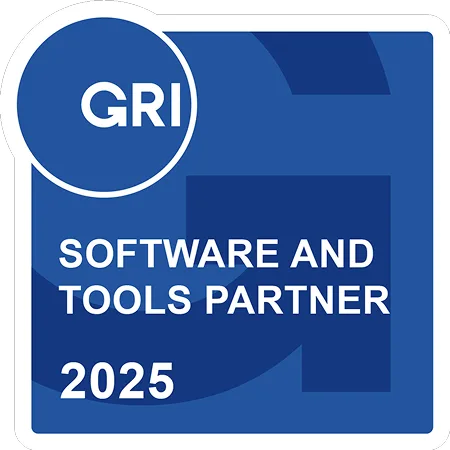Investments are not just about financial returns anymore, they are reflections of a company’s sustainability values and climate impact. As the world transitions to low-carbon economies, the capital you allocate defines the emissions you finance. Under the Greenhouse Gas (GHG) Protocol, these emissions fall under Scope 3 Category 15 – Investments.
This category is critical for financial institutions, banks, asset managers, insurers, and corporates with investment portfolios, yet it remains one of the least understood areas of Scope 3 reporting.
In this blog, we unpack what Category 15 covers, why it’s strategically significant, and how organizations can integrate it into climate disclosure and investment governance.
What Is Scope 3 Category 15?
According to the GHG Protocol, Scope 3 Category 15 includes greenhouse-gas emissions associated with a company’s investments that are not already included in its Scope 1 or 2 inventories.
In simpler terms, these are emissions generated by companies, projects, or assets that you finance or hold an ownership stake in, but do not directly control.
Category 15 applies to:
- Private and public financial institutions, such as banks, investment funds, and insurers.
- Non-financial companies with equity stakes or joint ventures.
- Development banks, export credit agencies, and similar entities investing for impact or profit.
Investments are considered a downstream Scope 3 category because providing capital or financing is a service that enables another entity’s activity, often with significant emissions implications.
Types of Investments Covered Under Category 15
The GHG Protocol divides financial investments into four main types:
1. Equity Investments
Ownership stakes in other companies- subsidiaries, associates, or joint ventures.
Framed simply: if your organization owns part of another company, the emissions from that company’s operations (Scope 1 and 2) are partly yours to report.
Example:
A manufacturing firm holds a 25 percent equity stake in an energy-intensive supplier. The proportional emissions from that supplier’s operations contribute to the firm’s Category 15 inventory.
2. Debt Investments (with Known Use of Proceeds)
Loans or bonds issued for specific projects such as financing a solar plant, infrastructure, or a manufacturing facility.
Even though ownership isn’t transferred, the lender or investor enables the activity and thus shares responsibility for its emissions.
3. Project Finance
Long-term funding of infrastructure or industrial projects.
Here, both equity and debt providers are accountable for the proportional Scope 1 and 2 emissions of the projects they fund.
For large projects (e.g., highways or power plants), even Scope 3 use-phase emissions may be material and relevant.
4. Managed Investments and Client Services
Asset managers or financial advisors who oversee investments on behalf of clients can optionally disclose emissions associated with their managed assets, demonstrating transparency and alignment with sustainability expectations.
Why Scope 3 Category 15 Matters
1. The Majority of Financial Emissions Are Financed Emissions
For most banks and asset managers, financed emissions account for over 90 percent of their climate impact. Ignoring these leaves major blind spots in sustainability reporting.
2. Investor and Regulator Expectations Are Rising
Frameworks such as PCAF (Partnership for Carbon Accounting Financials), SBTi, and CSRD require organizations to disclose financed emissions and show credible transition plans.
Category 15 provides the structure to do so.
3. Risk Management and Asset Resilience
Climate-intensive portfolios face transition risk, stranded-asset exposure, and reputational challenges.
Transparent Category 15 reporting helps organizations assess and mitigate these risks early.
4. Aligning Capital with Climate Goals
Managing investment-related emissions enables companies to direct capital toward low-carbon industries, helping them meet net-zero targets while driving long-term value creation.
5. Strategic Differentiation
Investors and customers increasingly prefer institutions that demonstrate responsible capital allocation.
Reporting Category 15 emissions is now a signal of leadership and accountability in sustainable finance.
Key Challenges in Managing Investment-Linked Emissions
Data Availability and Quality
Gathering consistent emissions data across diverse investees is one of the biggest hurdles.
Smaller firms or projects may not have verified GHG inventories, creating reliance on secondary data or sector averages.
Boundary and Ownership Clarity
Determining which investments fall under Scope 3 vs Scope 1 or 2 depends on the organizational boundary approach (equity share, operational control, or financial control).
Misalignment can lead to double counting or underreporting.
Portfolio Complexity
Institutions with hundreds of holdings across multiple asset classes and jurisdictions struggle with standardized measurement and reporting.
Changing Regulatory Landscape
Evolving disclosure requirements, CSRD in Europe, BRSR Core in India mean firms must adapt their methodologies to stay compliant.
Opportunities for Financial and Corporate Leaders
1. Integrate Climate Accountability into Investment Decisions
Move beyond screening- embed emissions as a core metric in due diligence, portfolio management, and capital allocation.
2. Engage Investees for Data and Action
Work with portfolio companies to enhance their GHG reporting and support decarbonization initiatives.
This builds long-term resilience and trust across the investment network.
3. Set Portfolio-Level Climate Targets
Set measurable reduction goals for financed emissions using standards like PCAF or SBTi for Financial Institutions.
4. Leverage Digital Platforms for Data Intelligence
Advanced sustainability platforms such as Sprih provide automated data aggregation, investee benchmarking, and reporting templates aligned with the GHG Protocol and regulatory frameworks.
5. Communicate Climate-Aligned Investment Strategy
Publicly linking investment decisions with emissions outcomes enhances brand trust, investor relations, and sustainability ratings.
How Sprih Helps Financial Institutions and Corporates Manage Category 15
Sprih enables investors and corporations to build a transparent, data-driven view of their financed emissions:
- Portfolio-wide visibility: Consolidate equity, debt, and project-finance data in one intelligent platform.
- Smart data sourcing: Automate emission data collection through supplier and investee integrations.
- Standards-aligned reporting: Ensure alignment with GHG Protocol, PCAF, CDP, and SBTi.
- Scenario modelling: Test the impact of investment shifts on total emissions and net-zero progress.
- Board-ready dashboards: Present visual analytics for sustainability and risk reporting.
Request a Demo to explore how Sprih helps financial institutions and corporates gain complete visibility into Scope 3 Category 15 emissions.
Capital Is the Next Climate Frontier
Scope 3 Category 15 reminds us that climate responsibility doesn’t end at operational walls. It extends to where capital flows.
By integrating financed emissions into sustainability strategies, organizations can align profit with purpose, mitigate portfolio risks, and lead the global transition to a low-carbon economy.
With the right tools, transparency, and partnerships, companies can make every investment a step toward climate resilience.
Explore more about Scope 3 emissions, sustainability intelligence, and value-chain transformation on Sprih Insights.
FAQs
What are Scope 3 Category 15 emissions?
Scope 3 Category 15 emissions are the indirect greenhouse gas emissions associated with a company’s investments, such as equity holdings, debt investments, project finance, and managed assets. These emissions represent the climate impact of the activities financed or supported by a company’s capital.
Who needs to report Scope 3 Category 15 emissions?
Banks, asset managers, private equity firms, insurance companies, and corporates with investment portfolios are required or encouraged to report these emissions to provide a complete picture of their financed climate impact and align with global disclosure standards.
Why are investment-related emissions important for financial institutions?
Investment-related emissions often make up more than 90 percent of a financial institution’s total carbon footprint. Reporting these emissions helps organizations understand their financed climate risks, align with regulatory requirements, and direct capital toward sustainable investments.
What frameworks guide the reporting of financed emissions?
The most widely used frameworks include the Greenhouse Gas Protocol, the Partnership for Carbon Accounting Financials (PCAF), the Science Based Targets initiative for Financial Institutions (SBTi-FI), and the Corporate Sustainability Reporting Directive (CSRD).
What are the biggest challenges in reporting Category 15 emissions?
Common challenges include limited access to investee data, inconsistent reporting standards, portfolio complexity, and evolving regulations. Many organizations also struggle to integrate emissions data into financial systems for decision-making.
How can investors and corporations reduce emissions from their investments?
Organizations can reduce financed emissions by integrating climate risk into investment screening, engaging with portfolio companies to improve their sustainability performance, setting portfolio-level decarbonization targets, and shifting capital toward low-carbon projects.
How does Sprih help organizations manage Scope 3 Category 15 emissions?
Sprih provides an AI-powered sustainability platform that helps organizations consolidate investment data, align reporting with global standards, and analyze portfolio-level emissions. It enables financial institutions and corporates to track, disclose, and reduce their financed emissions effectively.












